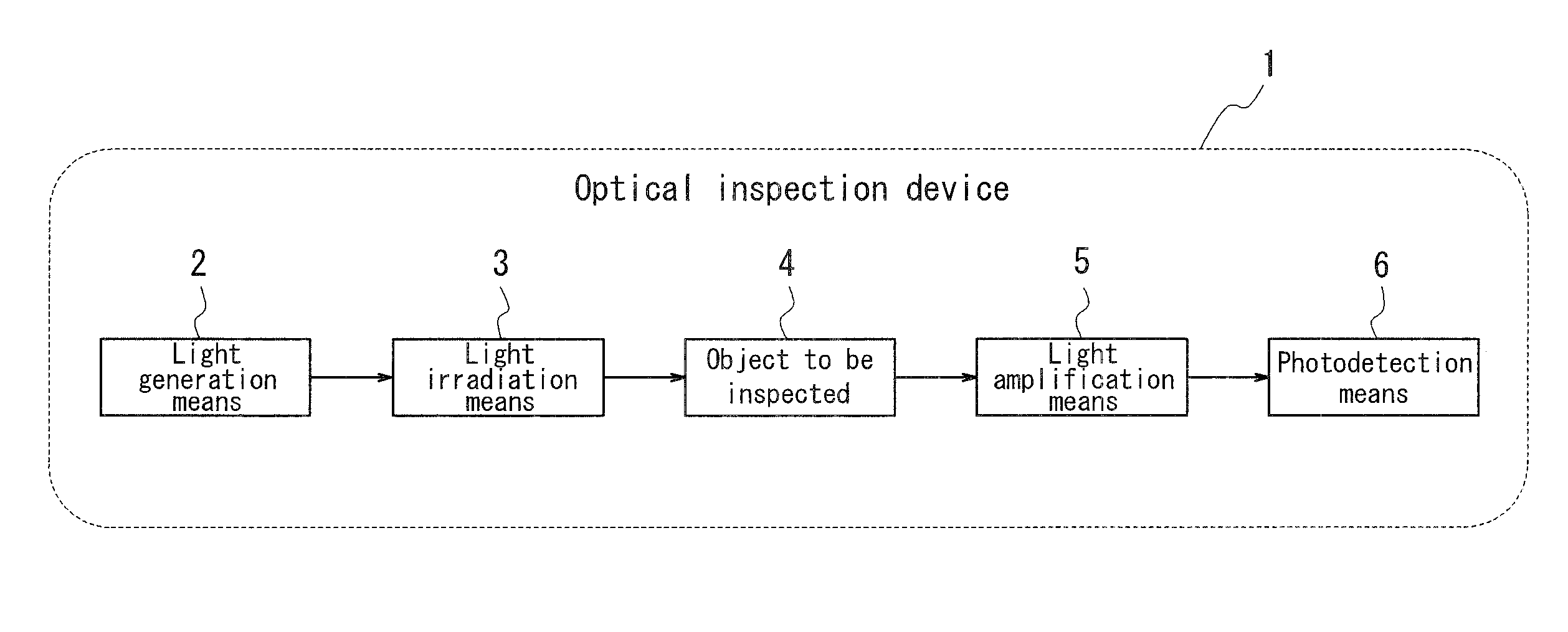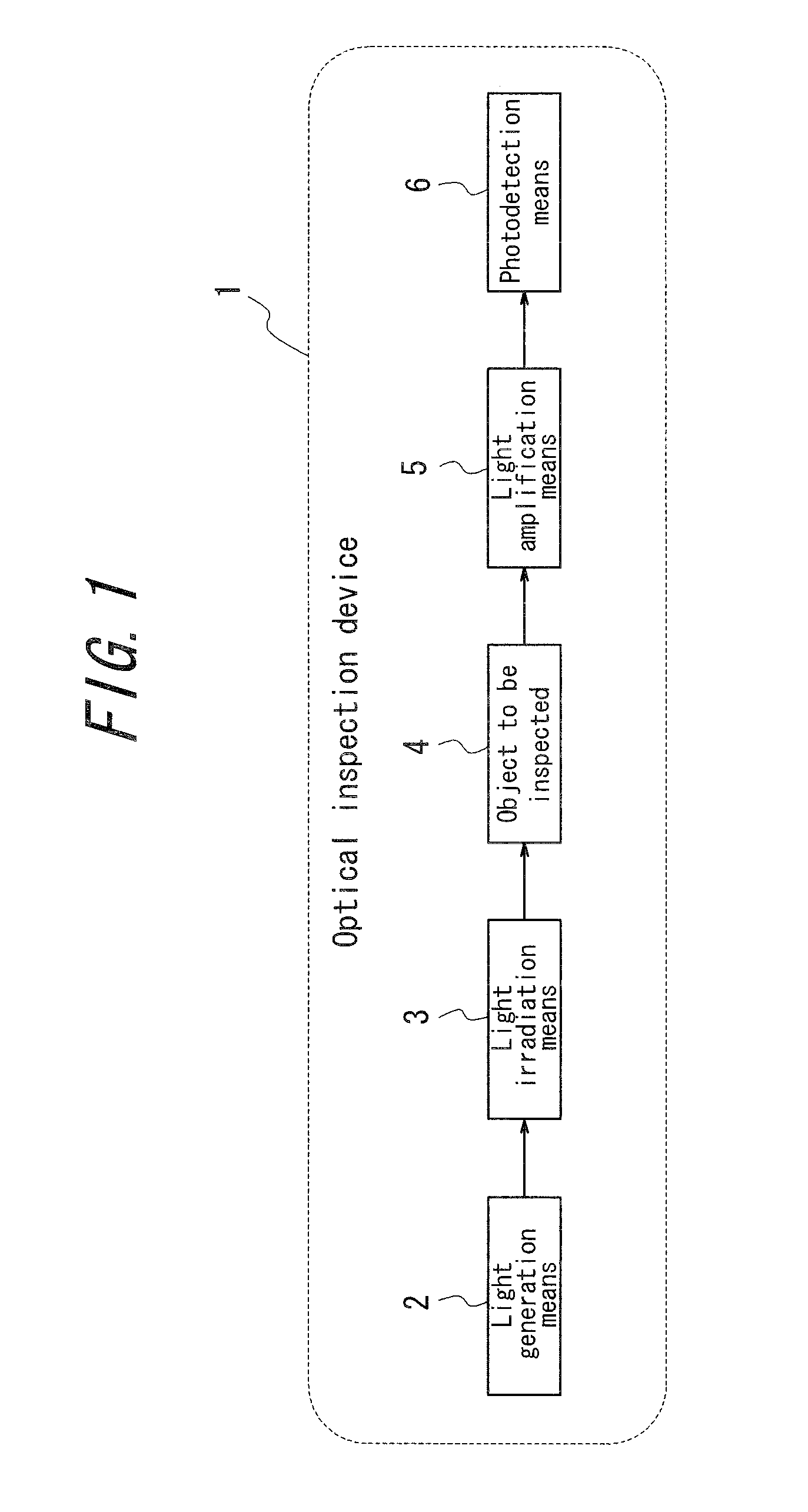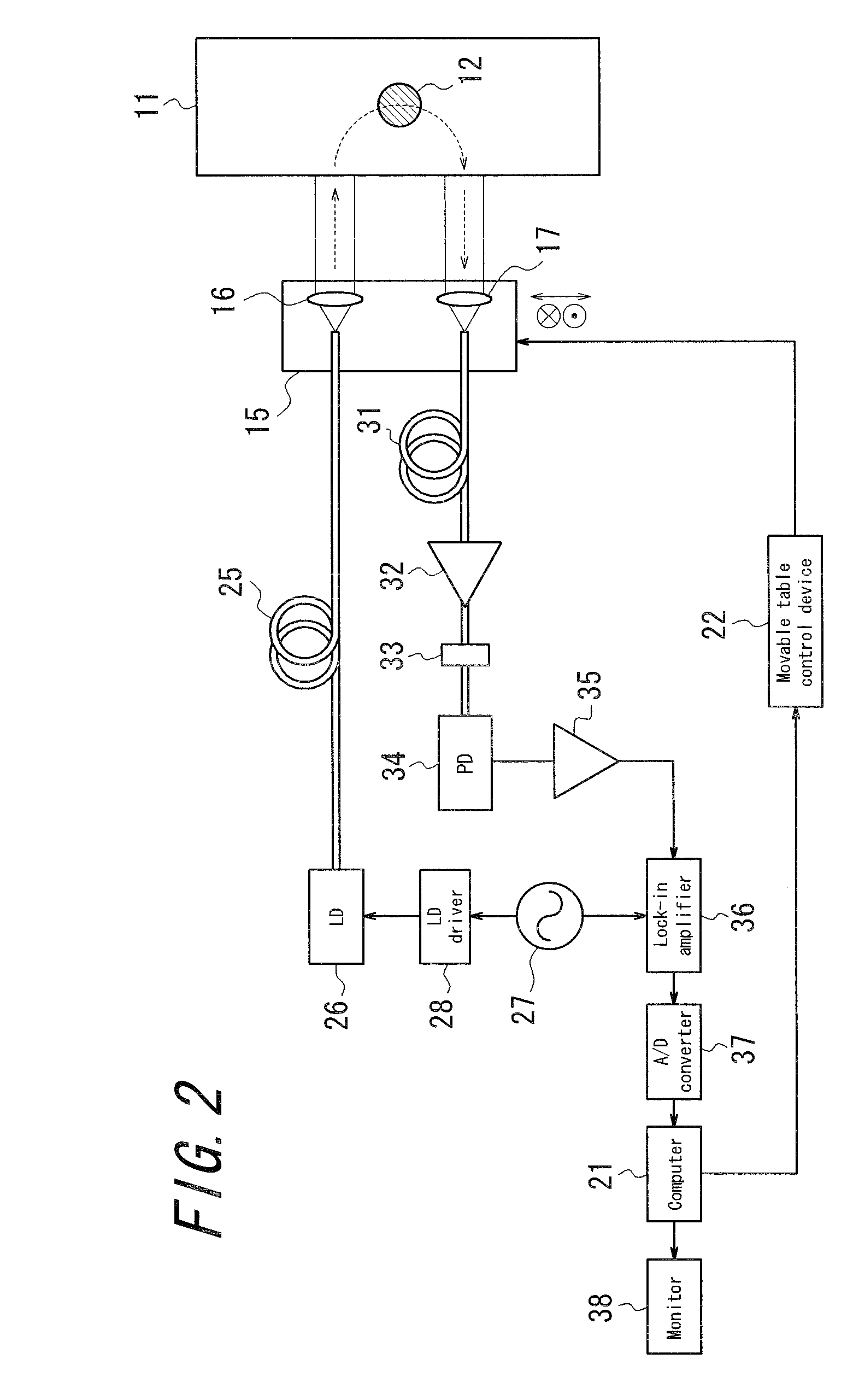Optical inspection device, electromagnetic wave detection method, electromagnetic wave detection device, organism observation method, microscope, endoscope, and optical tomographic image generation device
a technology of electromagnetic wave detection and optical inspection device, which is applied in the direction of optical radiation measurement, diagnostics using spectroscopy, spectral modifiers, etc., can solve the problems of difficult to obtain clear images, low conversion efficiency of excitation light to signal light, and significant weak optical signals obtained from organisms. , to achieve the effect of improving the intensity of light, low cost and high sensitivity
- Summary
- Abstract
- Description
- Claims
- Application Information
AI Technical Summary
Benefits of technology
Problems solved by technology
Method used
Image
Examples
first embodiment
[0297]FIG. 2 is a functional block diagram illustrating a configuration of the optical inspection device according to the first embodiment of the invention. The optical inspection device is a device for visualizing a route condition of a blood vessel 12 buried in fat 11 when a rigid endoscope is inserted to the inside of a body to approach organs like a stomach covered by fat. The device enables the scope-assisted surgery with avoiding bleeding due to wrong cutting of the blood vessel 12.
[0298]For this reason, the optical inspection device shown in FIG. 2 is provided, at a distal insertion portion of a rigid endoscope which is not shown, with a movable table 15 which can be moved in two-dimensional direction in a plane perpendicular to an insertion direction, and the movable table 15 is provided with a projector lens 16 for irradiating the object to be inspected with light and a collective lens 17 for collecting signal light from the object to be inspected at intervals of about 10 m...
second embodiment
[0312]FIG. 4 is a functional block diagram illustrating a configuration of the optical inspection device according to the second embodiment of the invention. In the embodiment, a laser scanning confocal fluorescence microscope 51 is constituted, and a He—Ne laser 52 continuously oscillating at a wavelength of 543 nm is provided as the light generation means. With respect to laser light emitted from the He—Ne laser 42, its light intensity is adjusted by a light intensity adjustment device 53 such as an acousto-optic modulator (AOM) or the like, for example. Then, the light passes through a dichroic mirror 54, an X-Y galvano scanner mirror 55, a pupil lens 56, a tube lens 57 and an objective lens 58, and is collected so that a living cell sample 60 to be inspected is irradiated therewith. Thus, in the laser scanning confocal fluorescence microscope 51, the light intensity adjustment device 53, the dichroic mirror 54, the X-Y galvano scanner mirror 55, the pupil lens 56, the tube lens ...
third embodiment
[0319]FIG. 5 is a functional block diagram illustrating a configuration of the optical inspection device according to the third embodiment of the invention. In the embodiment, a laser scanning multiphoton fluorescence microscope 71 is constituted, and this embodiment is different, as compared with the configuration of the laser scanning confocal fluorescence microscope 51 shown in FIG. 4, mainly in aspects that a Titanium-sapphire laser 72 is used as the light generation means; the gain of the light amplification means 63 is controlled by the computer 65 through a gain control means 73; and the dichroic mirror 54 is disposed between the tube lens 57 and the objective lens 58 and its optical properties are rendered to be applied for the wavelength of emitted light from the Titanium-sapphire laser 72.
[0320]In the embodiment, ultrashort optical pulses having a repetition rate of 80 MHz, a pulse width of 150 fs and an oscillation wavelength of 1000 nm are generated from the Titanium-sap...
PUM
| Property | Measurement | Unit |
|---|---|---|
| penetration depth | aaaaa | aaaaa |
| central wavelength | aaaaa | aaaaa |
| spectral width | aaaaa | aaaaa |
Abstract
Description
Claims
Application Information
 Login to View More
Login to View More - R&D
- Intellectual Property
- Life Sciences
- Materials
- Tech Scout
- Unparalleled Data Quality
- Higher Quality Content
- 60% Fewer Hallucinations
Browse by: Latest US Patents, China's latest patents, Technical Efficacy Thesaurus, Application Domain, Technology Topic, Popular Technical Reports.
© 2025 PatSnap. All rights reserved.Legal|Privacy policy|Modern Slavery Act Transparency Statement|Sitemap|About US| Contact US: help@patsnap.com



